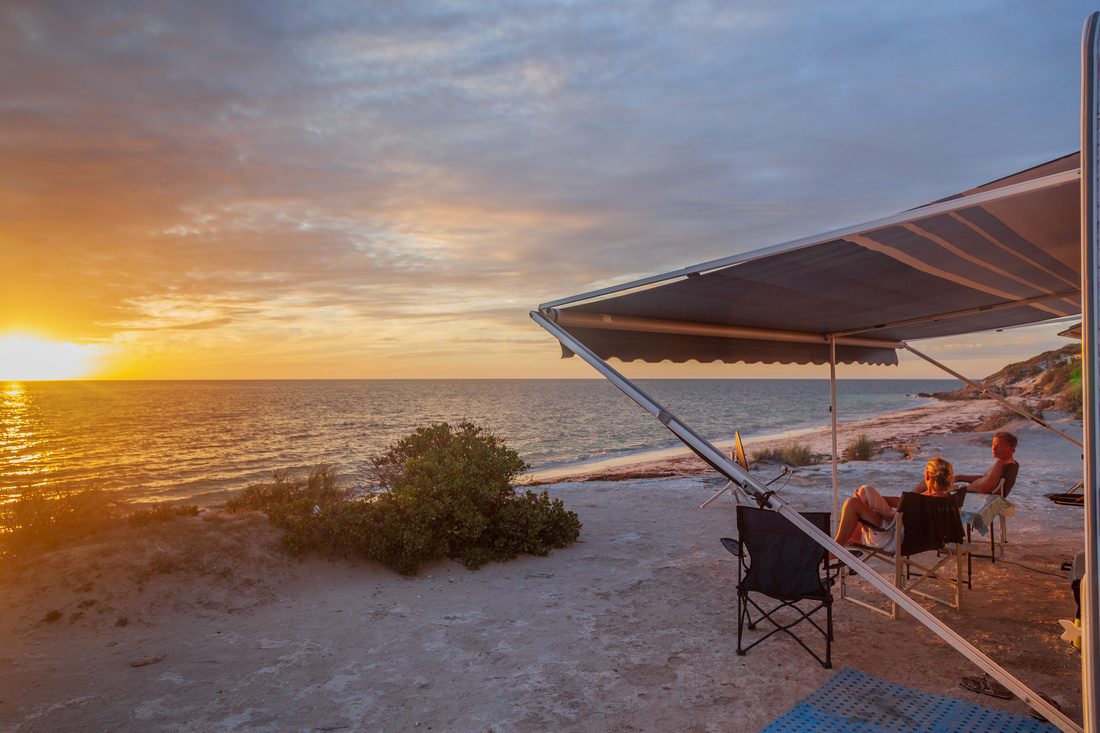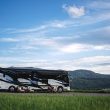Your RV awning is the first layer of protection against the elements when you’re relaxing outdoors at the campground. Stormy afternoons and harsh summer heat are blocked by the shade of your awning, which makes RV awning care an important part of keeping your motorhome up and running.
With all its importance to your trip, RV awning care and maintenance is something you should research when purchasing a new RV or motorhome. At RVUSA, we understand the important part your RV awning plays in every camping trip. We gathered some basic care and management tips to help your awning last!
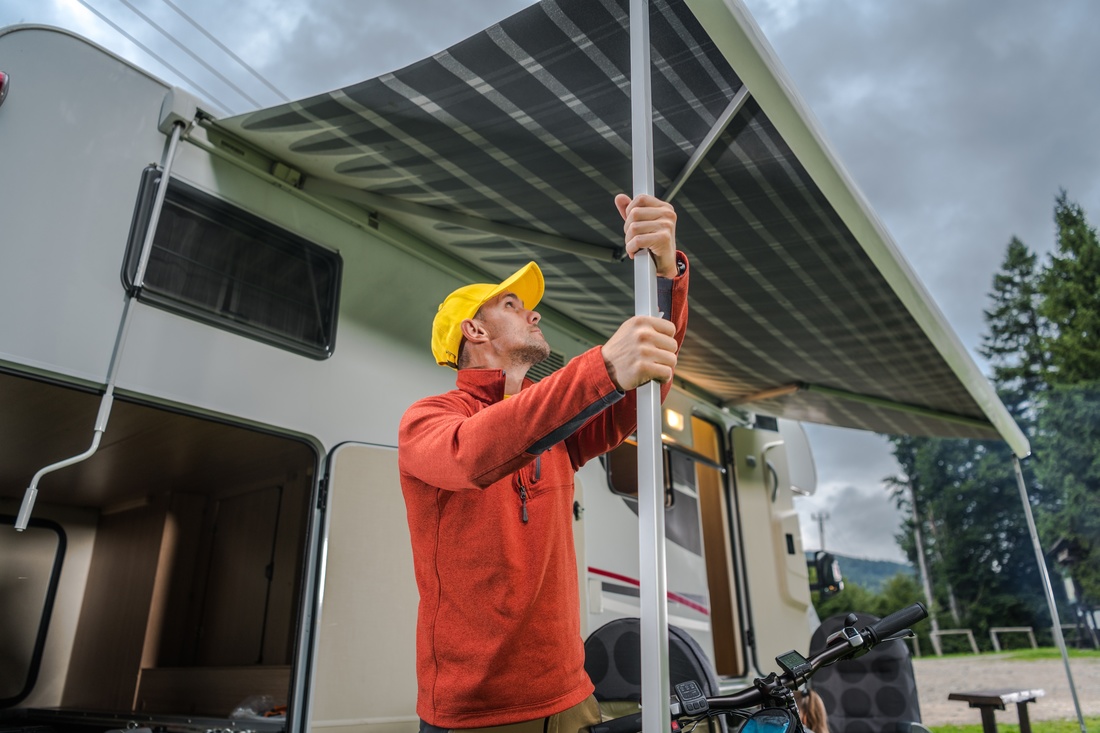
Understand Your RV Awning
RV awnings come in two different materials: vinyl and acrylic. Proper cleaning of your awning depends on the material it’s made of. Often, with either material, hosing off your awning with water is enough to keep it clean. Scrubbing your awning too frequently can wear down the material, making it more prone to holes and ripping. In addition, scrubbing can wear away any water-repellant coating applied by the manufacturer.
Vinyl Awnings
Vinyl awnings can be scrubbed gently with a soft brush, water and gentle soap. They’re often coated by the manufacturer with a substance that prevents mildew growth. If you scrub too hard, you might scrub the protective coating off.
Acrylic Awnings
Acrylic awnings can be scrubbed with a stiff brush, water and soap. They usually don’t have a mildew-proof coating, so scrubbing them sparingly is okay.
Never use an abrasive or oil-based cleaner on either type of RV awning.
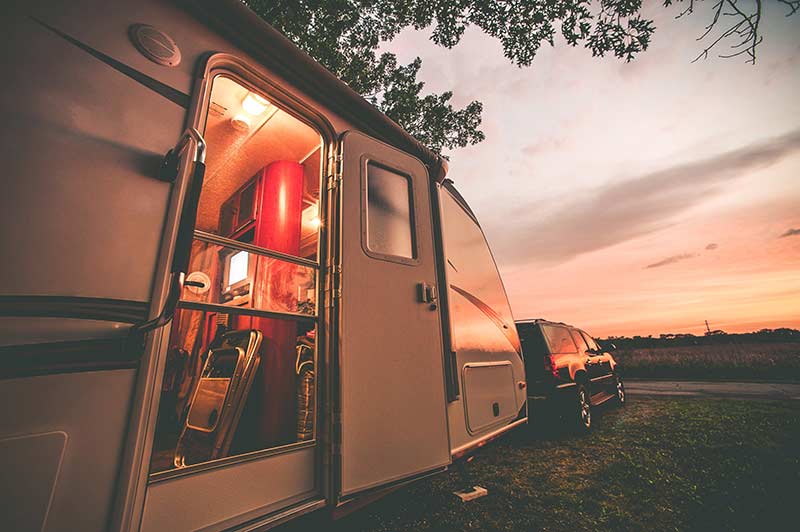
Need the perfect RV for a getaway?
The Basics of RV Awning Care
Now that you understand the differences in awning types and how to treat each one differently, let’s dive into to some of the basic rules that apply to all types of RV awnings.
Let Your Awning Dry Out
When wet from rain or a routine cleaning, its essential to give your awning time to completely air dry. Rolling up your awning while it’s still wet or, even worse, placing it in storage while wet, creates the perfect environment for mildew and dry rot.
Always air dry your awning before you leave the RV resort. If you need to leave with the awning still wet, you can extend the awning back out when you return home to allow it to continue drying.
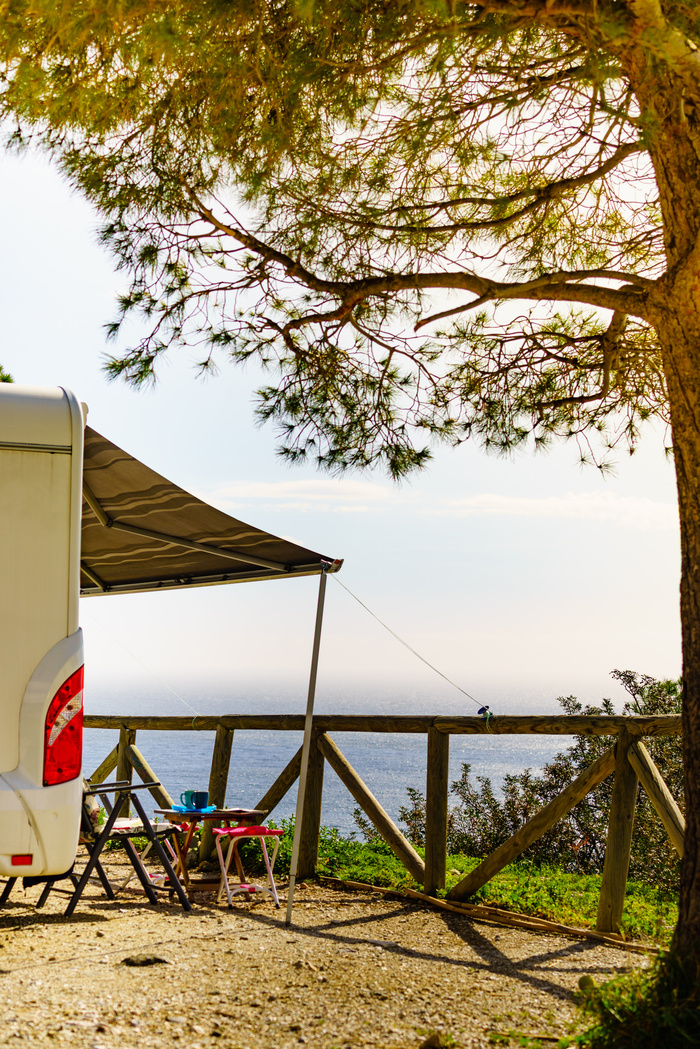
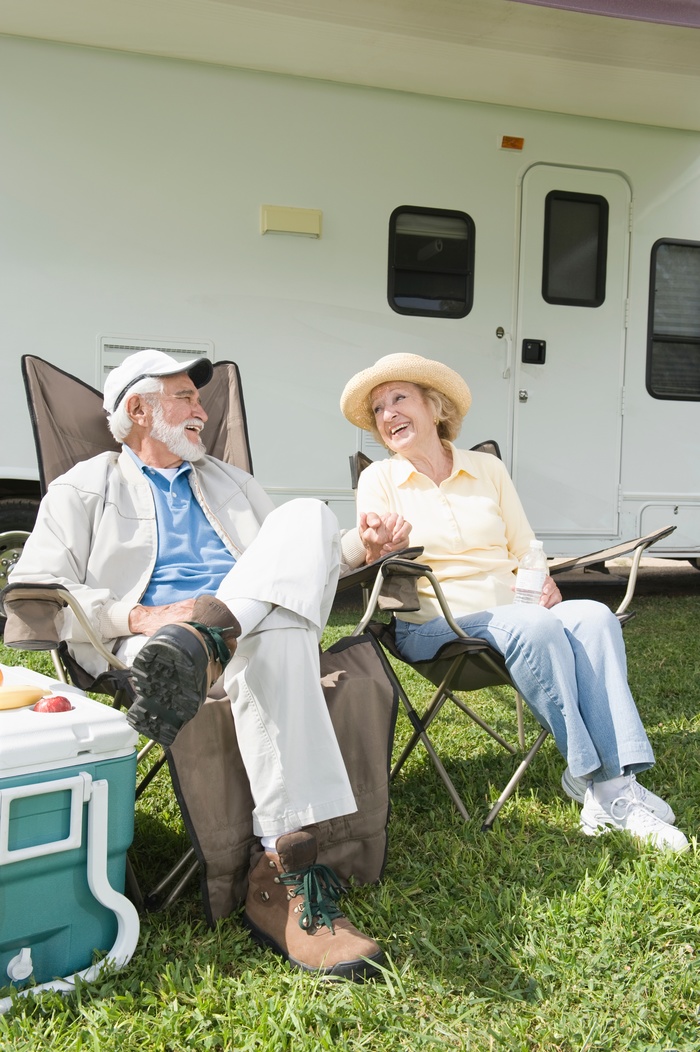
Routinely Clean Your Awning
Routinely cleaning your RV awning to remove dirt and mold will help extend its life. Brands like Camco, Thetford and B.E.S.T. make popular RV awning cleaners.
Mild dish detergent can also work to clean your awning, although dedicated awning cleaners will work much better. Though a car wash brush can be used, make sure not to apply too much pressure or scrub too much in one area. This may lead to worn awning fabric or, even worse, a hole in your awning.
Protect Your Awning from UV Damage
Sun damage often takes a toll on RV awnings. Hours in the hot sun can bleach and break down the fabric. There are several commercial fabric protectors and sealants available that you can use to apply a protective coating on your awning.
If you plan to be away most of the day, it’s smart to roll up your awning. This way it won’t undergo any unnecessary sun damage.
Steady Your Awning in the Wind
On windy days, your RV awning can end up flapping noisily, and dangerously. The best way to stop this and protect your awning from wind damage is de-flapper clamps. These will help hold your awning in place and protect it from ripping in the harsh winds.
You can also purchase an RV awning stabilizer kit to help your RV awning care routine. These kits often include screws and spring-loaded tension straps. They reinforce your awning by allowing you to secure it to the ground by the arms.
Don’t Catch Water
When you extend your awning on a rainy day, the water often collects in the center of the awning. With the arms holding the sides up, the center will dip as it fills with water. This can cause the awning to bend out of shape, or even rip.
To prevent catching gallons of water every time it rains, set your awning so one corner is dipped lower than the others. This allows water to safely run off the awning to an area you’ve predetermined.
Although RVs are mostly used in summer months, this applies to winter too. Don’t let snow or ice buildup on your awning.
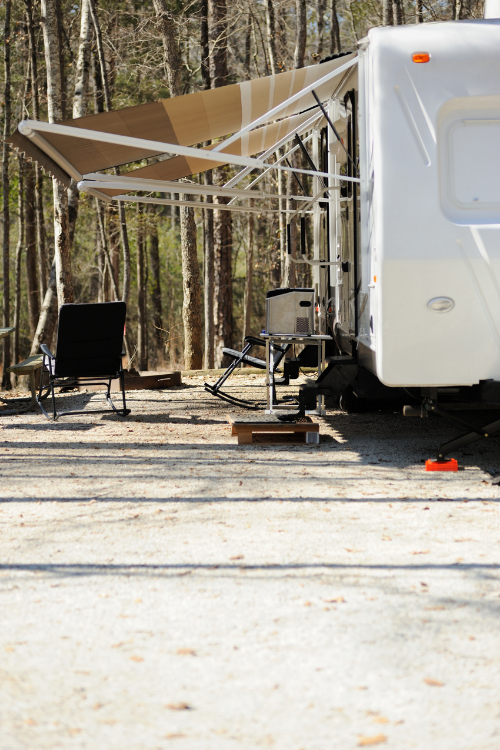
Lock the Rewind Mechanism
Once your awning is rolled up, make sure to lock it in place. If it’s not properly locked in the rolled-up position, outside forces like strong winds can cause it to unroll. This is especially dangerous if it happens while driving, when winds blowing on your RV awning are the strongest.
Make a habit of locking your awning every time it’s fully rewound. This will help ensure you don’t forget to secure it in place when hitting the road or storing your RV outside.
As long as you treat your RV awning with care, it should last for years of camping trips to come!
Ready to find an RV for your adventures?


